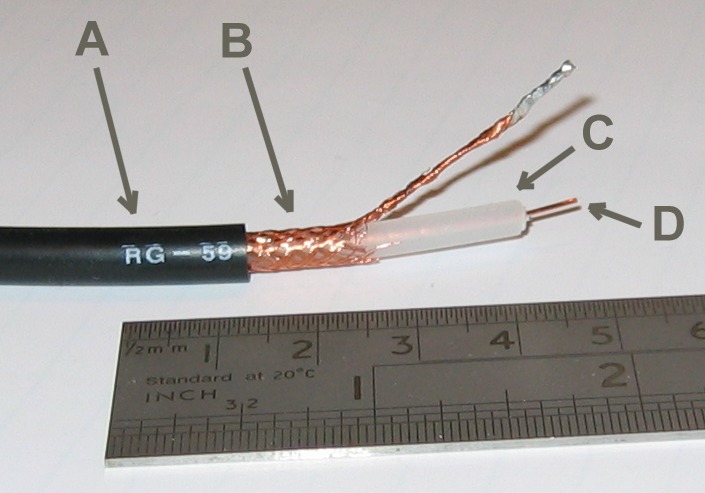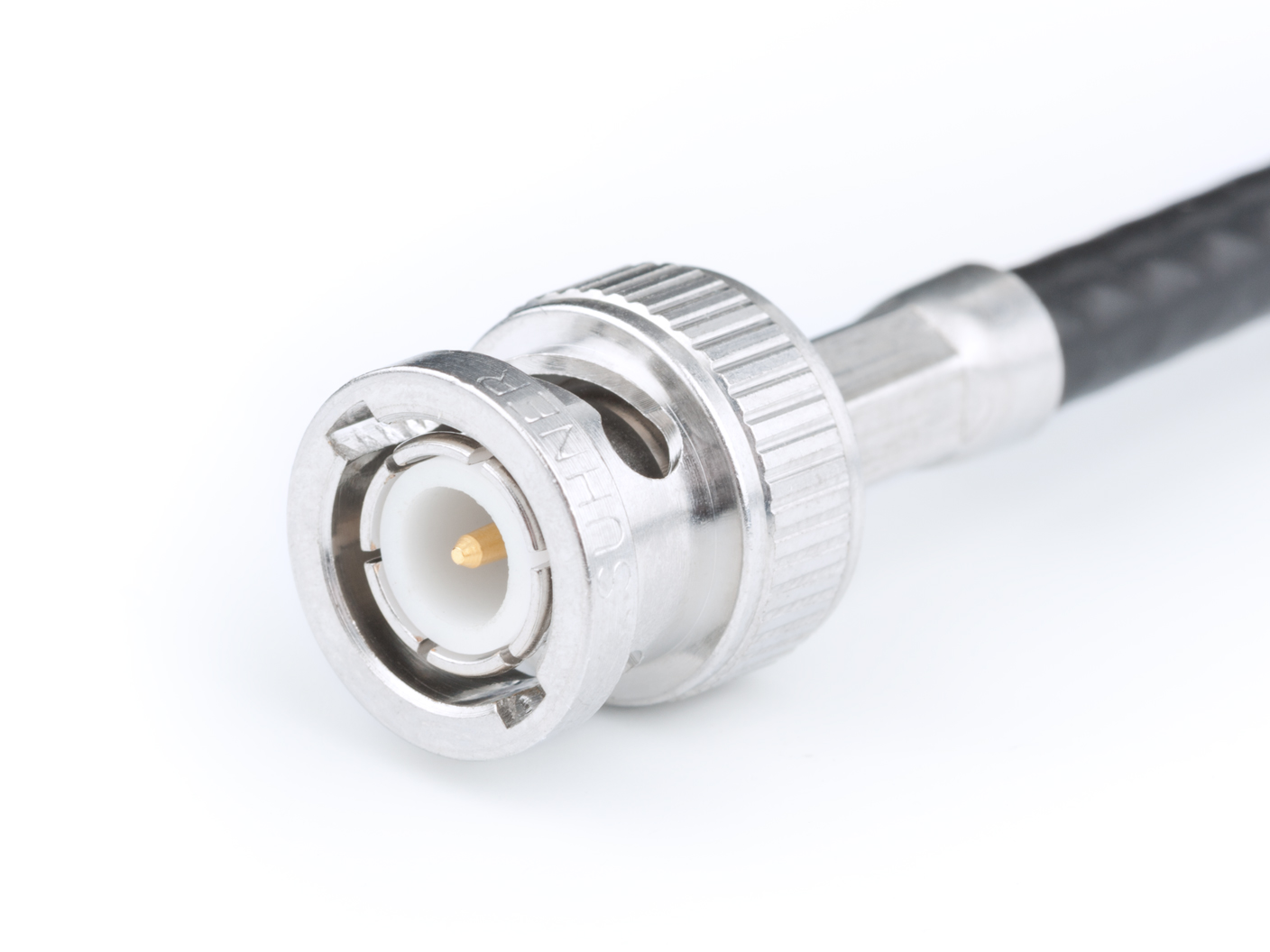|
DS-3
Digital Signal 3 (DS3 or T3 line) is a digital signal level 3 T-carrier. The data rate for this type of signal is 44.736 Mbit/s (45 Mb). It can transport 28 DS1 level signals within its payload. It can transport 672 DS0 level channels within its payload. Such circuits are the usual kind between telephony carriers, both wired and wireless, and typically by OC1 optical connections. Cabling DS3 interconnect cables must be made with true 75-ohm coaxial cable and connectors. Cables or connectors which are 50 ohms or which significantly deviate from 75 ohms will result in signal reflections which will lower the performance of the connection, possibly to the point of not workingGR-139-CORE ''Generic Requirements for Central Office Coaxial Cable'', defines type 734 and 735 cables for this application. Due to losses, there are differing distance limitations for each type of cable. Type 734 has a larger center conductor and insulator for lower losses for a given distance. The ... [...More Info...] [...Related Items...] OR: [Wikipedia] [Google] [Baidu] |
T-carrier
The T-carrier is a member of the series of carrier systems developed by AT&T Bell Laboratories for digital transmission of multiplexed telephone calls. The first version, the Transmission System 1 (T1), was introduced in 1962 in the Bell System, and could transmit up to 24 telephone calls simultaneously over a single transmission line of copper wire. Subsequent specifications carried multiples of the basic T1 (1.544 Mbit/s) data rates, such as T2 (6.312 Mbit/s) with 96 channels, T3 (44.736 Mbit/s) with 672 channels, and others. Although a ''T2'' was defined as part of AT&T's T-carrier system, which defined five levels, T1 through T5, only the T1 and T3 were commonly in use.1999 ad: On the left, in an aisle seat, a man who very much "filled" his airline seat while on the right side of the aisle is a height-challenged man whose shoe toes barely reach the floor Transmission System 1 The T-carrier is a hardware specification for carrying multiple time-division m ... [...More Info...] [...Related Items...] OR: [Wikipedia] [Google] [Baidu] |
Digital Signal 1
Digital Signal 1 (DS1, sometimes DS-1) is a T-carrier signaling scheme devised by Bell Labs. DS1 is the primary digital telephone standard used in the United States, Canada and Japan and is able to transmit up to 24 multiplexed voice and data calls over telephone lines. E-carrier is used in place of T-carrier outside the United States, Canada, Japan, and South Korea. DS1 is the logical bit pattern used over a physical T1 line; in practice, the terms ''DS1'' and ''T1'' are often used interchangeably. Overview T1 refers to the primary digital telephone carrier system used in North America. T1 is one line type of the PCM T-carrier hierarchy. T1 describes the cabling, signal type, and signal regeneration requirements of the carrier system. The signal transmitted on a T1 line, referred to as the DS1 signal, consists of serial bits transmitted at the rate of 1.544 Mbit/s. The type of line code used is called Alternate Mark Inversion (AMI). Digital Signal Designation is the ... [...More Info...] [...Related Items...] OR: [Wikipedia] [Google] [Baidu] |
Digital Signal 0
Digital Signal 0 (DS0) is a basic digital signaling rate of 64 kilobits per second (kbit/s), corresponding to the capacity of one analog voice-frequency-equivalent communication channel. The DS0 rate, and its equivalents E0 in the E-carrier system and T0 in the T-carrier system, form the basis for the digital multiplex transmission hierarchy in telecommunications systems used in North America, Europe, Japan, and the rest of the world, for both the early plesiochronous systems such as T-carrier and for modern synchronous systems such as SDH/ SONET. The DS0 rate was introduced to carry a single digitized voice call. For a typical phone call, the audio sound is digitized at an 8 kHz sample rate, or 8000 samples per second, using 8-bit pulse-code modulation for each of the samples. This results in a data rate of 64 kbit/s. Because of its fundamental role in carrying a single phone call, the DS0 rate forms the basis for the digital multiplex transmission hierarchy in telecommunica ... [...More Info...] [...Related Items...] OR: [Wikipedia] [Google] [Baidu] |
Telephone Company
A telecommunications company is a kind of electronic communications service provider, more precisely a telecommunications service provider (TSP), that provides telecommunications services such as telephony and data communications access. Many traditional solely telephone companies now function as internet service providers (ISPs), and the distinction between a telephone company and ISP has tended to disappear completely over time, as the current trend for supplier convergence in the industry develops. Additionally, with advances in technology development, other traditional separate industries such as cable television, Voice-over IP (VoIP), and satellite providers offer similar competing features as the telephone companies to both residential and businesses leading to further evolution of corporate identity have taken shape. Due to the nature of capital expenditure involved in the past, most telecommunications companies were government owned agencies or privately-owned mono ... [...More Info...] [...Related Items...] OR: [Wikipedia] [Google] [Baidu] |
Wireless
Wireless communication (or just wireless, when the context allows) is the transfer of information (''telecommunication'') between two or more points without the use of an electrical conductor, optical fiber or other continuous guided transmission medium, medium for the transfer. The most common wireless technologies use radio waves. With radio waves, intended distances can be short, such as a few meters for Bluetooth, or as far as millions of kilometers for NASA Deep Space Network, deep-space radio communications. It encompasses various types of fixed, mobile, and portable applications, including two-way radios, Mobile phone, cellular telephones, personal digital assistants (PDAs), and wireless networking. Other examples of applications of radio ''wireless technology'' include Global Positioning System, GPS units, garage door openers, wireless Mouse (computing), computer mouse, Keyboard (computing), keyboards and Headset (audio), headsets, headphones, radio receivers, satelli ... [...More Info...] [...Related Items...] OR: [Wikipedia] [Google] [Baidu] |
Coaxial Cable
Coaxial cable, or coax (pronounced ), is a type of electrical cable consisting of an inner Electrical conductor, conductor surrounded by a concentric conducting Electromagnetic shielding, shield, with the two separated by a dielectric (Insulator (electricity), insulating material); many coaxial cables also have a protective outer sheath or jacket. The term ''coaxial'' refers to the inner conductor and the outer shield sharing a geometric axis. Coaxial cable is a type of transmission line, used to carry high-frequency Signal, electrical signals with low losses. It is used in such applications as telephone trunk lines, Internet access, broadband internet networking cables, high-speed computer bus (computing), data buses, cable television signals, and connecting Transmitter, radio transmitters and Radio receiver, receivers to their Antenna (radio), antennas. It differs from other shielded cables because the dimensions of the cable and connectors are controlled to give a precise, ... [...More Info...] [...Related Items...] OR: [Wikipedia] [Google] [Baidu] |
Signal Reflection
In telecommunications, signal reflection happens when a signal is transmitted along a transmission medium (such as a copper cable or an optical fiber) and part of it is reflected back toward the source instead of reaching the end. This reflection is caused by imperfections or physical variations in the cable (such as abrupt changes in its geometry) that lead to impedance mismatches. These mismatches disrupt the signal and cause some of it to bounce back. In radio frequency (RF) systems, this is typically measured using the voltage standing wave ratio (VSWR), with device called a VSWR bridge. The amount of reflected energy depends on the degree of impedance mismatch and is mathematically describe by the reflection coefficient. Because the principles are the same, this concept is perhaps easiest to understand when considering an optical fiber. Imperfections in the glass create mirrors that reflect the light back along the fiber. Impedance discontinuities cause attenuation, attenu ... [...More Info...] [...Related Items...] OR: [Wikipedia] [Google] [Baidu] |
BNC Connector
The BNC connector is a miniature quick-connect/disconnect RF connector, radio-frequency connector for coaxial cable. It was introduced on military radio equipment in the 1940s, and has since become widely used in radio systems and as a common type of video connector. It has a twist-to-lock design, where two lugs on the Gender of connectors and fasteners, female connector engage slots in the shell of the Gender of connectors and fasteners, male one. BNC is designed to maintain the characteristic impedance of the cable across the connection, and is made in 50-ohm and 75-ohm versions. It is normally used for radio-frequency signals up to about 2 gigahertz and 500 volts. Similar radio-frequency connectors differ in dimensions and attachment features, and may allow for higher voltages, higher frequencies, or three-wire connections. History In 1941, the US Navy used a smaller version of the threaded N connector, the Type BN (Baby N), as the UG-85/U, UG-86/U, UG-114/U and UG- ... [...More Info...] [...Related Items...] OR: [Wikipedia] [Google] [Baidu] |
RG-6
RG-6/U is a common type of coaxial cable used in a wide variety of residential and commercial applications. An RG-6/U coaxial cable has a characteristic impedance of 75 ohms. The term, ''RG-6'', is generic and is applied to a wide variety of cable designs, which differ from one another in shielding characteristics, center conductor composition, dielectric type and jacket type. ''RG'' was originally a unit indicator 'Mike Meyers' CompTIA Network+ Certification Passport', by Glen E. Clark, edited by Christopher A. Crayton, McGraw-Hill, 3rd Edition, 2009, page 32. "Specific coax types were developed for the Ethernet standard, but a number of radio cables have very similar characteristics, and these so-called radio-grade (RG) cables also became associated with Ethernet." for bulk radio frequency (RF) cable in the U.S. military's Joint Electronics Type Designation System. The suffix ''/U'' means ''for general utility use''. The number was assigned sequentially. The ''RG'' unit indi ... [...More Info...] [...Related Items...] OR: [Wikipedia] [Google] [Baidu] |
RG-59
RG-59/U is a specific type of coaxial cable, often used for low-power video and Radio frequency, RF signal connections. The cable has a characteristic impedance of 75 Ohm (unit), ohms, and a capacitance of around 20pF/ft (60pF/m). The 75 ohm impedance matches a dipole antenna in free space. ''RG'' (for ''radio guide'') was originally a unit indicator for bulk radio frequency (RF) cable in the U.S. military's Joint Electronics Type Designation System. The suffix ''/U'' means ''for general utility use''. The number ''59'' was assigned sequentially. The ''RG'' unit indicator is no longer part of the JETDS system (MIL-STD-196E) and cable sold today under the RG-59 label does not necessarily meet military specifications. RG-59 is often used at baseband video frequencies, such as composite video. It may also be used for broadcast frequencies, but its high-frequency losses are too high to allow its use over long distances; in these applications, RG-6 or RG-11 are used instead. I ... [...More Info...] [...Related Items...] OR: [Wikipedia] [Google] [Baidu] |
Incumbent Local Exchange Carrier
An incumbent local exchange carrier (ILEC) is a local telephone company which held the regional monopoly on landline service before the market was opened to competitive local exchange carriers, or the corporate successor of such a firm, in the United States and Canada. Definition An incumbent local exchange carrier is a local exchange carrier (LEC) in a specific area that * on the date of enactment of the Telecommunications Act of 1996, provided telephone exchange service * on the date of enactment, was deemed to be a member of the National Exchange Carrier Association pursuant to the Code of Federal Regulations (C.F.R) Title 47, section 69.601(b). * or is a person or entity that, on or after such date of enactment, became a successor or assignee of a member described in the previous bullet. The Federal Communications Commission (FCC) may, by rule, provide for the treatment of an LEC (or class or category thereof) as an ILEC if: * such carrier occupies a position in the marke ... [...More Info...] [...Related Items...] OR: [Wikipedia] [Google] [Baidu] |
Competitive Local Exchange Carrier
A competitive local exchange carrier (CLEC) is a North American telecommunications provider classification that emerged based on the competition model of the Telecommunications Act of 1996 in the United States. The act required the previously established incumbent local exchange carrier (ILEC) in each local market to provide infrastructure hosting and services to CLECs to enable competition with the ILEC. Background Local exchange carriers (LECs) are characterized as incumbent (ILECs) or competitive (CLECs). The ILECs are usually the original, monopoly LEC in a given area, and receive different regulatory treatment from the newer CLECs. A data local exchange carrier (DLEC) is a CLEC specializing in DSL services by leasing lines from the ILEC and reselling them to Internet service providers (ISPs). History CLECs evolved from the competitive access providers (CAPs) that began to offer private line and special access services in competition with the ILECs beginning in 1985. The CA ... [...More Info...] [...Related Items...] OR: [Wikipedia] [Google] [Baidu] |






